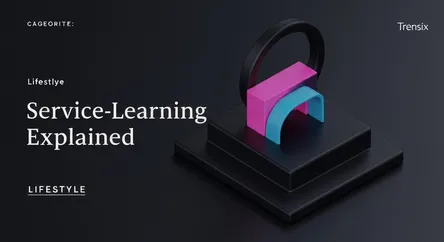Lifestyle
Service-Learning Explained

Discover service-learning, an educational approach that combines classroom instruction with meaningful community service to enrich learning.
What is it?
Service-learning is an educational method that links academic curriculum with meaningful community service. More than just volunteering, it's a structured experience where students apply classroom knowledge to address real-world community needs. A critical component is reflection, which helps students connect their service activities to learning objectives and understand broader social issues. This approach transforms education from a passive process into an active one, where students learn by doing and contributing to their community in a tangible way.
Why is it trending?
The rise of service-learning is driven by a demand for more practical, hands-on educational experiences. Educators and employers alike recognize the value of soft skills like leadership, problem-solving, and empathy, which are central to this model. It makes learning more relevant and engaging, boosting student motivation. As institutions aim to cultivate socially responsible citizens, service-learning offers a powerful framework for students to understand their role in society and develop a lifelong commitment to civic engagement, making them more well-rounded individuals.
How does it affect people?
Service-learning has a dual impact on students and communities. Students gain a richer understanding of their coursework, develop critical thinking skills, and experience significant personal growth. For communities, the partnership provides essential services and fresh energy to tackle local challenges. This creates a powerful symbiotic relationship where students receive a valuable education while community organizations gain dedicated support, fostering stronger social bonds and mutual respect between academic institutions and their surrounding neighborhoods.